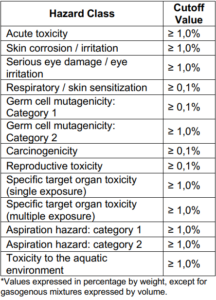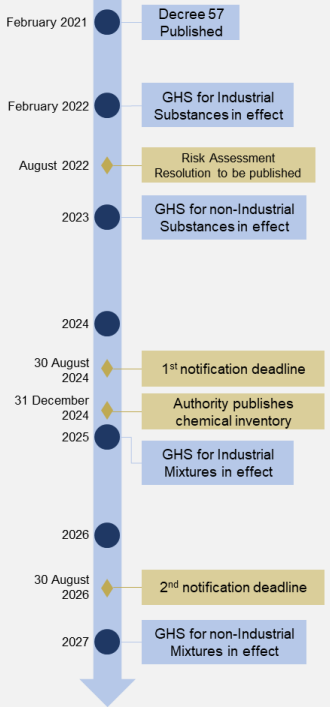Chilean Chemical Regulation
Chile REACH (THE DECREE 57)
WHAT IS THE DECREE 57 ABOUT?
Chile enacted, on February 2021, a new regulation on the classification, labeling, and notification of hazardous substances and mixtures. Decree 57 establishes criteria and obligations that manufacturers and importers of hazardous substances must meet in order to introduce or maintain their products on the market. The new regulation was developed jointly by the Ministry of Health and the Ministry of Environment.
WHAT IS THE SCOPE?
Decree 57 applies to substances and mixtures that are not regulated by specific laws and are classified as hazardous. Examples of substances not considered for Decree 57 application are nuclear substances, intermediaries, substances in warehouses, substances used in scientific research and development, pharmaceutical, veterinary, and cosmetic products, fertilizers, articles containing dangerous substances or mixtures, and food products.
WHAT IS CONSIDERED A HAZARDOUS SUBSTANCE?
In August 2021, the Ministry of Health approved an official list of classification of substances by Resolution 777. The list is known to be the minimum reference for manufacturers and importers when classifying their substances. Hazard substances are those containing hazard classes identified by GHS revision 7, with some exceptions.
Hazard categories not considered in Decree 57 include:
- the flammable gases (category 1b)
- flammable liquids (category 4)
- desensitized explosives
- acute toxicity (category 5)
- skin irritation (category 3)
- eye irritation (category 2b)
- aspiration hazard (category 2)
acute hazards to the aquatic environment (categories 2 and 3)
The list is not extensive, and in the case where a chemical is not present in the list, manufacturers and importers must identify, classify, and label the substances according to their hazardous status before marketing or use. It is desirable to use existing data from trials, data centers, clinical studies, and scientific literature. If further tests are still required, these should be preferably performed according to the OECD guidelines and carried out by laboratories certified according to the ISO 17025 standard. Animal tests are the last resort.
WHO SHOULD NOTIFY?
The manufacturers and importers of substances classified as hazardous substances present in mixtures will have to notify the Chilean government when dealing with amounts ≥ 1 ton per annum. Substances contained in mixtures only requires notification when presenting such hazardous characteristics and are over cutoff values as displayed below.

WHAT INFORMATION IS REQUIRED FOR NOTIFICATION?
The environmental authority is establishing an electronic portal for chemical reporting where the notifier will be able to submit all requested information. The information to be provided should include:
Notifier information
- Name, address, phone, and email of the notifier, legal representative, and contact person.
- Manufacturers must indicate the address of the manufacturing plant.
Data about the substance
- Substance names (IUPAC, commercial, common, etc.)
- CAS number
- Hazard classification (with hazard class and category)
- Manufactured or imported amounts per annum (expressed in mass)
- Substance intended uses
- Attach the substance SDS (in Spanish)
The notification must be made every two years, with a deadline of August 30, considering what was manufactured or imported in the previous two calendar years. The first notification window is scheduled for February – August 2024.
IMPLEMENTATION TIMELINE
Decree 57 implementation will be gradual with several deadlines along the way. The image below best summarizes important deadlines.





